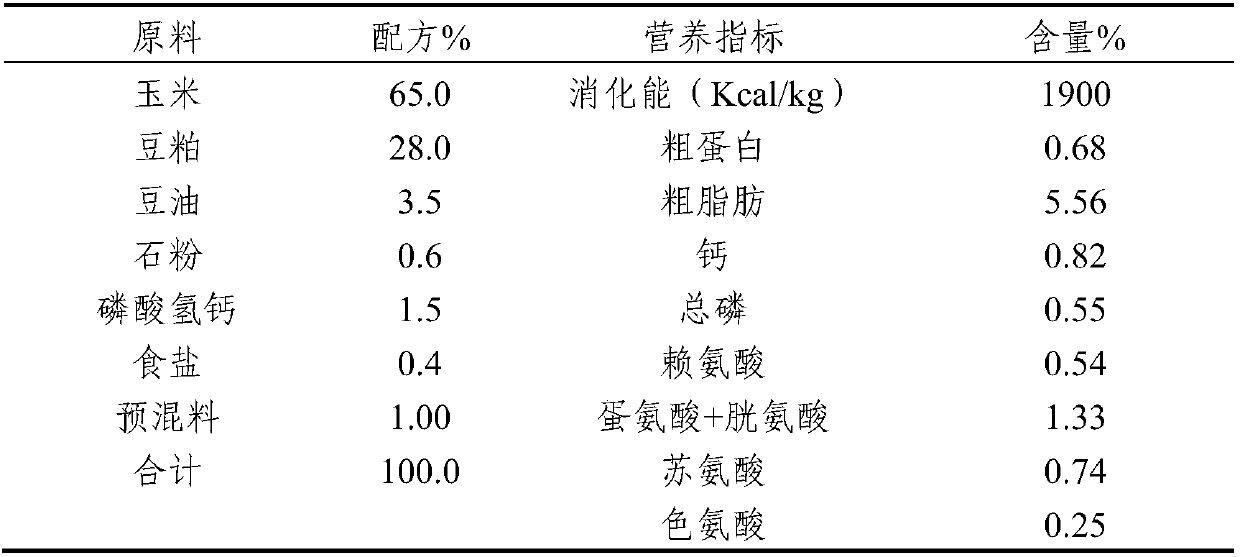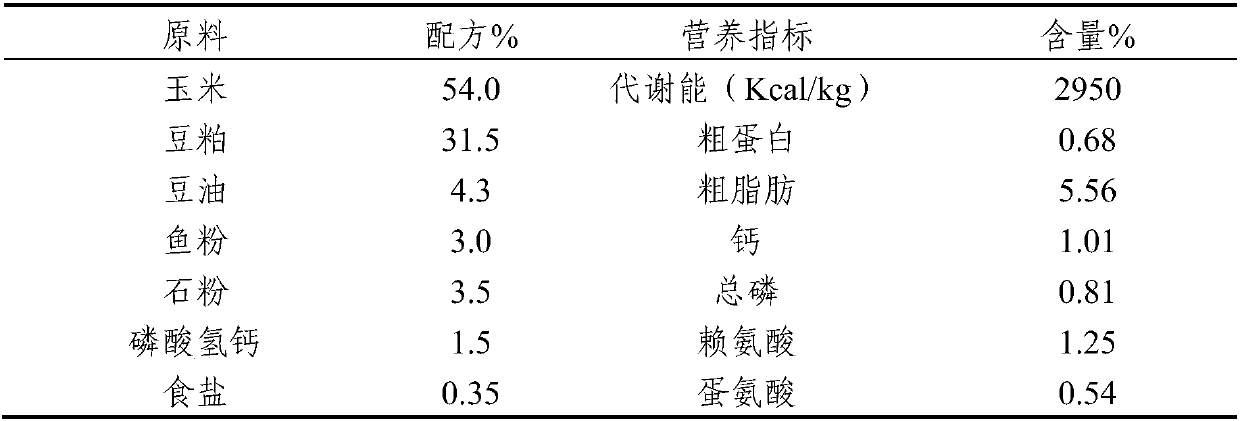Feed additives, premixes and batches containing bacteriocinoids and Pediococcus lactis
A feed additive, Pediococcus lactis technology, used in bacteria, animal feed, animal feed, etc., can solve the problems of not being able to completely get rid of the dependence of antibiotic growth promoters, not fully mobilizing probiotics, and unsatisfactory use, etc. Improve the intestinal microbial environment, prevent diarrhea, and eliminate drug residues
- Summary
- Abstract
- Description
- Claims
- Application Information
AI Technical Summary
Problems solved by technology
Method used
Image
Examples
Embodiment 1
[0033] Example 1 Preparation of Bacillus subtilis CGMCC No.6511 bacteriocins
[0034] 1) Preparation of Bacillus subtilis fermentation broth
[0035] The MNB medium was used for fermentation at a culture temperature of 30° C. for 20 h, the initial pH was 7, the inoculum size was 3%, and the rotation speed of the shaker was 225 rpm.
[0036] The formula of MNB medium is: glucose, 5.0g / L; peptone, 5.0g / L; meat extract, 3.0g / L; yeast extract powder, 1.0g / L; MgSO 4 7H2O, 0.5g / L; MnSO 4 ·H 2 O, 0.005g / L; pH, 7.0.
[0037] 2) Extraction of bacteriocinoids by ammonium sulfate salting-out method
[0038] Prepare the sterile filtrate from the cultivated Bacillus subtilis bacteria liquid, slowly add the ground ammonium sulfate powder into the sterile filtrate, and stir gently to ensure that the ammonium sulfate is completely dissolved, after stirring slowly for 1 hour, place it in a refrigerator at 4°C . Ammonium sulfate gradient treatment was 70%. After overnight, the solutions ...
Embodiment 2
[0048] The preparation of embodiment 2 Pediococcus lactis bacterial powder
[0049] 1) Preparation of Pediococcus lactis CGMCC No.6500 seed solution
[0050] Inoculate the strains preserved on the slant of the test tube into an anaerobic tube containing 20mL of MRS liquid medium, and incubate at a constant temperature for 20 hours at 37°C until the number of viable bacteria reaches 10 7 CFU / mL, inoculate at 1% in a 250mL Erlenmeyer flask filled with 100mL MRS liquid medium, culture anaerobically at 37°C for 20h, until the number of viable bacteria reaches 10 7 CFU / mL (MRS agar medium plate count) or more, as the seed solution for later use.
[0051] 2) Liquid submerged fermentation culture
[0052] The above-mentioned Pediococcus lactis liquid seed solution was added to a 50L fermenter with an inoculation amount of 1%. The culture parameters were: temperature, 37°C; stirring speed, 50rmp; pH value, 6.0±0.5; culture time, 20h. During the fermentation process, 0.5% of the tot...
Embodiment 3
[0060] Preparation of Example 3 Bacteriocins and Pediococcus lactis Mixed Feed Additive
[0061] Prepared by uniformly mixing 50% (wt) of the dry powder of Bacillus bacteriocinoids prepared in Example 1 with 50% (wt) of the powder of Pediococcus lactis prepared in Example 2. Its quality standards are: dry bacteriocinoid powder 102mg / g, live lactic acid bacteria count 12 billion / g, moisture ≤ 10%, arsenic ≤ 0.5mg / kg, lead ≤ 1.0mg / kg.
PUM
 Login to View More
Login to View More Abstract
Description
Claims
Application Information
 Login to View More
Login to View More - R&D
- Intellectual Property
- Life Sciences
- Materials
- Tech Scout
- Unparalleled Data Quality
- Higher Quality Content
- 60% Fewer Hallucinations
Browse by: Latest US Patents, China's latest patents, Technical Efficacy Thesaurus, Application Domain, Technology Topic, Popular Technical Reports.
© 2025 PatSnap. All rights reserved.Legal|Privacy policy|Modern Slavery Act Transparency Statement|Sitemap|About US| Contact US: help@patsnap.com



